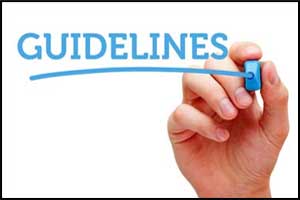- Home
- Editorial
- News
- Practice Guidelines
- Anesthesiology Guidelines
- Cancer Guidelines
- Cardiac Sciences Guidelines
- Critical Care Guidelines
- Dentistry Guidelines
- Dermatology Guidelines
- Diabetes and Endo Guidelines
- Diagnostics Guidelines
- ENT Guidelines
- Featured Practice Guidelines
- Gastroenterology Guidelines
- Geriatrics Guidelines
- Medicine Guidelines
- Nephrology Guidelines
- Neurosciences Guidelines
- Obs and Gynae Guidelines
- Ophthalmology Guidelines
- Orthopaedics Guidelines
- Paediatrics Guidelines
- Psychiatry Guidelines
- Pulmonology Guidelines
- Radiology Guidelines
- Surgery Guidelines
- Urology Guidelines
Prevention of Perioperative Peripheral Neuropathies-ASA Guideline

American Society of Anesthesiologists has released its Guideline for Prevention of Perioperative Peripheral Neuropathies.The guideline has appeared in Journal Anaesthesiology.
The task force has developed the guideline with an aim
- To educate American Society of Anesthesiologists (ASA) members
- To provide a reference framework for individual practices
- To stimulate the pursuit and evaluation of strategies that may prevent or reduce the frequency of occurrence or minimize the severity of peripheral neuropathies that may be related to perioperative positioning of patients
Preoperative History and Physical Assessment
- Review a patient's preoperative history and perform a physical examination to identify: body habitus, preexisting neurologic symptoms, diabetes mellitus, peripheral vascular disease, alcohol dependency, arthritis, and sex (e.g., male sex and its association with ulnar neuropathy).
- When judged appropriate, ascertain whether patients can comfortably tolerate the anticipated operative position.
Positioning Strategies for the Upper Extremities
Positioning Strategies to Reduce Perioperative Brachial Plexus Neuropathy
When possible, limit arm abduction in a supine patient to 90°.
- The prone position may allow patients to comfortably tolerate abduction of their arms to greater than 90°.*
Positioning Strategies to Reduce Perioperative Ulnar Neuropathy
- Supine Patient with Arm on an Armboard: Position the upper extremity to decrease pressure on the postcondylar groove of the humerus (ulnar groove).
- Use of either supination or the neutral forearm positions may be used to facilitate this action.
- Supine Patient with Arms Tucked at Side: Place the forearm in a neutral position.
- Flexion of the Elbow: When possible, avoid flexion of the elbow to decrease the risk of ulnar neuropathy.†
Positioning Strategies to Reduce Perioperative Radial Neuropathy
Avoid prolonged pressure on the radial nerve in the spiral groove of the humerus.
Positioning Strategies to Reduce Perioperative Median Neuropathy
Avoid extension of the elbow beyond the range that is comfortable during the preoperative assessment to prevent stretching of the median nerve.
Periodic Assessment of Upper Extremity Position during Procedures
Periodic perioperative assessments may be performed to ensure maintenance of the desired position.
Positioning Strategies for the Lower Extremities
Positioning Strategies to Reduce Perioperative Sciatic Neuropathy
- Stretching of the Hamstring Muscle Group: Positions that stretch the hamstring muscle group beyond the range that is comfortable during the preoperative assessment may be avoided to prevent stretching of the sciatic nerve.
- Limiting Hip Flexion: Since the sciatic nerve or its branches cross both the hip and the knee joints, assess extension and flexion of these joints when determining the degree of hip flexion.
Positioning Strategies to Reduce Perioperative Femoral Neuropathy
When possible, avoid extension or flexion of the hip to decrease the risk of femoral neuropathy.
Positioning Strategies to Reduce Perioperative Peroneal Neuropathy
Avoid prolonged pressure on the peroneal nerve at the fibular head.
Protective Padding
- Padded armboards may be used to decrease the risk of upper extremity neuropathy.
- Chest rolls in the laterally positioned patient may be used to decrease the risk of upper extremity neuropathy.
- Padding at the elbow may be used to decrease the risk of upper extremity neuropathy.
- Specific padding to prevent pressure of a hard surface against the peroneal nerve at the fibular head may be used to decrease the risk of peroneal neuropathy.
- Avoid the inappropriate use of padding (e.g., padding too tight) to decrease the risk of perioperative neuropathy.
Equipment
- When possible, avoid the improper use of automated blood pressure cuffs on the arm (i.e., placed below the antecubital fossa) to reduce the risk of upper extremity neuropathy.
- When possible, avoid the use of shoulder braces in a steep head-down position to decrease the risk of perioperative neuropathies.
Postoperative Physical Assessment
Perform a simple postoperative assessment of extremity nerve function for early recognition of peripheral neuropathies.
Documentation
Document specific perioperative positioning actions that may be useful for continuous improvement processes.‡
*The Task Force notes that the prone position affects shoulder and brachial plexus mobility differently than does the supine position.
†There is no consensus on an acceptable degree of flexion during the perioperative period.
‡Documentation may result in improvements by helping practitioners focus attention on relevant aspects of patient positioning and providing information on positioning strategies that may eventually lead to improvements in patient care.
For further reference log on to :
doi: 10.1097/ALN.0000000000001937.

Disclaimer: This site is primarily intended for healthcare professionals. Any content/information on this website does not replace the advice of medical and/or health professionals and should not be construed as medical/diagnostic advice/endorsement or prescription. Use of this site is subject to our terms of use, privacy policy, advertisement policy. © 2020 Minerva Medical Treatment Pvt Ltd